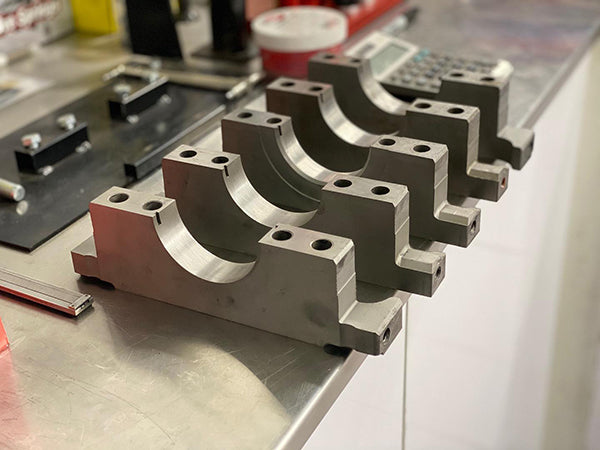
Why is the LS such a good engine?
If you've seen THE LATEST EPISODE, you know we've brought Mod Max back. One of our most-popular builds, the LS-swapped Nissan has taken everything we've thrown at it, since it became the first LS-swap on the channel way back in 2015 (CLICK THE ORIGINAL BUILD HERE).
We see comments on how "boring", "played out" and "low-tech" the LS engine is, but the reality is the LS is the biggest victim of its own popularity. There are several excellent reasons why people keep jamming them into cars, especially ones they want to go fast and shred tyres.
Read on to find out why LS V8s get put into just about everything...

Small Packaging
Ford's Coyote V8 is awesome, and the Toyota UZ-series are pretty rad too...but the issue with those donks is their size compared to their cubic-capacity.
The LS series of engines are tiny compared to many overhead-cam options, as the pushrod valvetrain and 90-degree Vee format makes for a compact engine designed to fit into the low-slung nose of the fifth-generation Chevrolet Corvette sports car. You get so much more horsepower-producing capacity for the LS' small size compared to a Coyote or UZ.
That isn't to say GM hasn't tried overhead cams before. The C4 Corvette ZR1 had used the quad-cam 32-valve LT5 small-block V8, but complaints relating to lack of vision and the bulky packaging of that motor meant General Motors looked to a far more compact engine for the new-generation 1997 Corvette.
Take a look at the image below to see the difference between a 4-litre 1UZ Toyota V8 and an LS on the right. While having the camshafts in the cylinder head makes the engine more efficient it means the head castings are enormous, and also affects the angle the exhaust exits the head, making for yet more packaging hurdles to overcome.

Light weight
With its aluminium construction and plastic intake manifold the LS1 was a properly lightweight option when it debuted in 1997. Although much of the Internet double backflips their own faces over the iron block truck variants that Americans can buy at corner stores for $3.99, the alloy motors are what people interested in turning corners get.
Tipping the scales at approximately 208kg with starter motor and alternator the 5.7-litre, 300hp V8 actually comes in lighter than a few of our favourite iron block Japanese sixes (hello, RB and JZ). Not only does it weigh around the same as an SR20, it moves the weight lower in the chassis and further back, as the LS carries most of its weight low and centred.

Cheap (compared to other popular engines)
OK, so this has changed a bit in the last 10 years since the "LS swap the world" craze took off, but you can still find alloy LS engines for far less than what an RB26 or JZ will run you. You can buy aftermarket iron and alloy blocks, cylinder heads, plus all manner of internal upgrades to suit any form of aspiration you need, and even these parts are fairly cheap compared to buying parts for a Pontiac V8 or Chrysler Hemi.
Honda's K-series four-cylinder family would be the only JDM bargain we can think of right now with aftermarket support to rival the LS... but then your car would sound like a Honda and nobody needs that in their life.

Tougher than a Brown Dog
Mod Max, the Mad Max-inspired S15 200SX, is powered by a stock 5.7-litre LS1 from a Series II Holden VT SS Commodore. Originally rated at 220kW (295hp) it was treated to a set of zoomie headers, unlocked standard PCM (ECU) and a free-flowing pod filter intake but, apart from that, it remains a stock Canadian-built LS1.
For a 20-year-old engine designed to live a mundane life in a mid-range perforance sedan the engine has copped an amazing amount of abuse in its time between the Silvia's shock towers. It has run 12-second quarter-mile times on the mud tyres, been thrashed mercilessly at MCM events around the country (including being raced and pumping towering burnouts), and is then put back into storage until the next time it needs to be dragged out. Basically, we beat on it like it owes us money and it has never let us down.
Part of this reliability comes from the strength engineered into the LS, which has a "six-bolt" bottom-end. This means there are six bolts holding each crankshaft main cap in place, whereas many 90s cars have four bolts and older (1960s) engines have only two bolts. A 6-bolt bottom-end holds the crankshaft more securely in the block, while the extra-long head bolts also provide great clamping force and structural integrity compared to old school engines.
Other design features like a large cam core, hypereutectic alloy pistons (not cast), great thermal properties, horsepower-producing 15-degree valve angles in the heads, symmetrical intake runners, a large throttle body, and high-lift rocker arms have pushed the antiquated pushrod V8 engine into a 21st Century rockstar.

Power per-dollar spent
Thanks to their large capacity the LS engines make great power with fairly minor modifications. It is easy to turn up the boost on a turbo car, but it is amazing how de-tuned the LS is from the factory.
The Black Chops E30 has a later-model 6.2-litre LS3 engine, which has been fitted with an upgraded camshaft to make over 330rwkW on the Haltech chassis dyno. This engine is still perfectly friendly to daily drive in Sydney's terrible traffic, while it will absolutely demolish a set of tyres if you want to send smoke signals to the boys to tell them you're going to the pub for a schnitty.
Slapping a supercharger or turbocharger onto an LS takes that power to silly levels, and their large capacity means that (depending on the set-up) they will have plenty of torque down low to remain driveable when not in the full boost death zone.

Yes, these engines pop up everywhere and it isn't surprising to see them pop up under the bonnet of cars any more, but that doesn't mean they're a bad choice of engine. And, ultimately, if you want to see something different there is nothing stopping you going and building that yourself.

![Limited Edition Street Cred Golf Poster [AUTOGRAPHED]](http://mightycarmods.com/cdn/shop/files/FullSizeRender_480x480.jpg?v=1760910149)
![Boosty Boi T-Shirt [Black Edition]](http://mightycarmods.com/cdn/shop/files/DSC2662_b504777a-ecdc-4da2-8b18-b4b525bce4d5_480x480.jpg?v=1759355323)
![Chopped MCM Hoodie [Black Edition]](http://mightycarmods.com/cdn/shop/files/DSC2445_d41795ae-8f15-4257-8ae2-60623a893824_480x480.jpg?v=1759099951)
